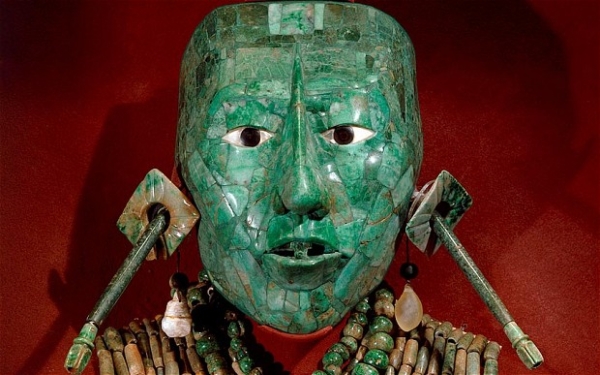Westwords
The reputation of Mexican criminal investigators is often somewhere below zero, except on this occasion.
They don’t even hear about a lot of crimes. They seldom solve cases. Even when they think they have caught a crook, they rarely gain convictions. Judges shake their heads. Maybe the warrant was defective, wrong address, misspelled name. Or maybe there is mistaken identity, that is not Jose.
We are told criminal investigators have been searching high and low for missing Mexicans since the cartels opened their first shooting galleries in 2006. Detectives look under every rock and behind every tree.
You don’t hear much about it but the long arm of the law has, for a year and more, been feeling around, trying to find the bandits who robbed a gold mine in the mountainous area of Mocorito, in Sinaloa, and took a ton of cargo valued at $8.4 million U.S.
It was the greatest gold robbery in Mexico history, considered the fourth biggest heist in the world. Nobody has been detained. Nobody has been accused.
The gold was in 900 kilograms of an aquiferous concentrate, meaning there was still some work to be done before it could go to market as bars, coins, rings, bracelets, watches and charms.
Circumstances hinted that the haul might have been an inside job — premeditated, well-planned and properly organized.
Retired General Moises Melo Garcia, state director of security, still professes total surprise. He said criminals in the area usually rob fuel from Pemex pipelines, that this was the first hit on a gold mine.
Investigators can’t say for sure that the robbery was the product of a specific group. Ah, but there are suspicions. That area was under control of Orso Ivan Gastelum, who was captured in January with the infamous Joaquin “El Chapo” Loera.
The severely offended mine owner, wealthy Canadian Rob McEwen, said this is far worse than the typical cost of doing business in Mexico. His and other companies in Sinaloa have had to negotiate agreements with drug traffickers to be able to work in their territories.
Not to worry, señor. Sinaloa Justice Prosecutor Marco Antonio Higuera is confident that his people will soon find those responsible and present them for judgment.
Stranger things have happened.
I am reminded of the great Mexico museum robbery of long, long ago. It made huge headlines. I know. I wrote some.
Thieves stole 140 thought-to-be-priceless Maya, Aztec and other artifacts from world-famous National Museum of Anthropology in Mexico City on Christmas Eve 1985. Nothing like that had ever happened.
Bad guys pried open seven glass display cases in three exhibition halls and grabbed several of the best-known gold, jade, turquoise and obsidian objects. Mexican prosecutors interrogated the nine guards.
They were “working” a 12-hour shift. One or more was/were supposed to visit each room in the modern museum at least once every hour. Nobody saw anything. The place was so quiet, you could have heard the mice if they had been singing Christmas carols.
Museum officials guesstimated the total value of stolen goods at “many millions of dollars.”
“We don’t know the price. Nothing like this has ever been sold on international markets,” said Felipe Solis, then curator at the museum.
Solis said he believed the thieves to be professionals who would probably try to sell the artifacts abroad. Other experts said the objects were so well known that the bandits would find it difficult to unload them.
“It’s like trying to fence the ‘Mona Lisa’” said Robert Childs, then director of collections at the Los Angeles County Museum of Natural History.
A former New York dealer in artifacts expressed fears for the fate of the stolen objects when the thieves discovered how difficult it would be to sell them.
“No reputable dealer would dare get even his fingerprints on them. The tragedy of this is that the thieves may become scared and destroy them.”
The stolen objects were small, easy to hide, easy to haul. The largest was less than a foot in diameter.

The most famous piece was the jade mosaic funerary mask of K’inich Janaab’ Pakal who ruled Palenque for 68 years until his death in 683 AD. The mask was discovered when the tomb was uncovered in 1952.
Other prizes included an Aztec vase shaped like a monkey and a mask of the bat god Murcielago of the Zapotec culture. Gone were artifacts from the two major Maya finds, at Palenque and the “sacred pool” at Chichen Itza.
The thieves were smart. They left dozens of display cases untouched and took the stuff that was most valuable and easiest to carry.
Criminal investigators responded with a double-barreled effort. They put up printed posters on power poles at highway intersections and at airports, seaports and railroad stations.
They also went high tech for the time, asking Interpol-Mexico to seek information from other countries where archeological artifacts had been stolen.
I recall reading that the burglary almost had to be linked to the international traffic in cultural treasures, that it was too big a haul for common crooks.
I felt for Mexicans who appreciated history. For generations, the looting of treasures from thousands of sites had been a persistent problem. Finally, archeologists had put some great discoveries in a safe place for all to see and appreciate. Now they were gone.
Officials talked of recovery. That sounded like a myth. It would be mission impossible, the proverbial search for one certain pin in a tribe of porcupines.
Three years later – three years — federal officials staged a big press conference to show off what they had found — most of the missing gold, jade and stone. They had actually made an arrest. Amazing.
Details of the case were intriguing. The thieves were not professionals. They were two dropouts from veterinary school, Carlos Perches Treviño, 28, and Ramón Sardina García, age 30.
Perches said they had spent six months planning the crime. He guessed they had made more than 50 trips to the museum. They examined display cases, took photographs, studied construction layout and charted the paths and patterns of security guards.
The bandits crawled through an air conditioning duct into the basement and spent maybe 30 minutes removing the art pieces and placing them carefully in a canvas suitcase. They left as they had entered and never saw or heard a guard.
Keep in mind that this was late on Christmas Eve. There could have been a guard party or maybe a sleep-in. The loss was not discovered until the day shift made morning rounds.
Perches said there was no clear plan of what to do with the loot. They “just had it” for more than a year, in the suitcase atop a closet.
When Perches moved to Acapulco, he offered to trade the treasure to drug traffickers for cocaine. No deal. He eventually returned to Mexico City.
One of the drug dealers, Salvador “el Cabo” Gutierrez, got caught and told the Perches story in negotiations with authorities. It took criminal investigators a while to find the needle in the big city haystack.
The artifacts survived in generally good condition. The mask of the Zapotec bat god required repairs.
Detectives were praised for cracking the case. Museum officials breathed a huge sigh of relief. Mexicans who cared and knew about the crime were happy about the recovery.
The moral of this story? Mexico criminal investigators sometimes get a bad rap. Under certain conditions, they do, indeed, solve crimes. Any day now, they may find a missing Mexican. They might even get the gold.
Well, maybe not. That would be pushing their luck.

